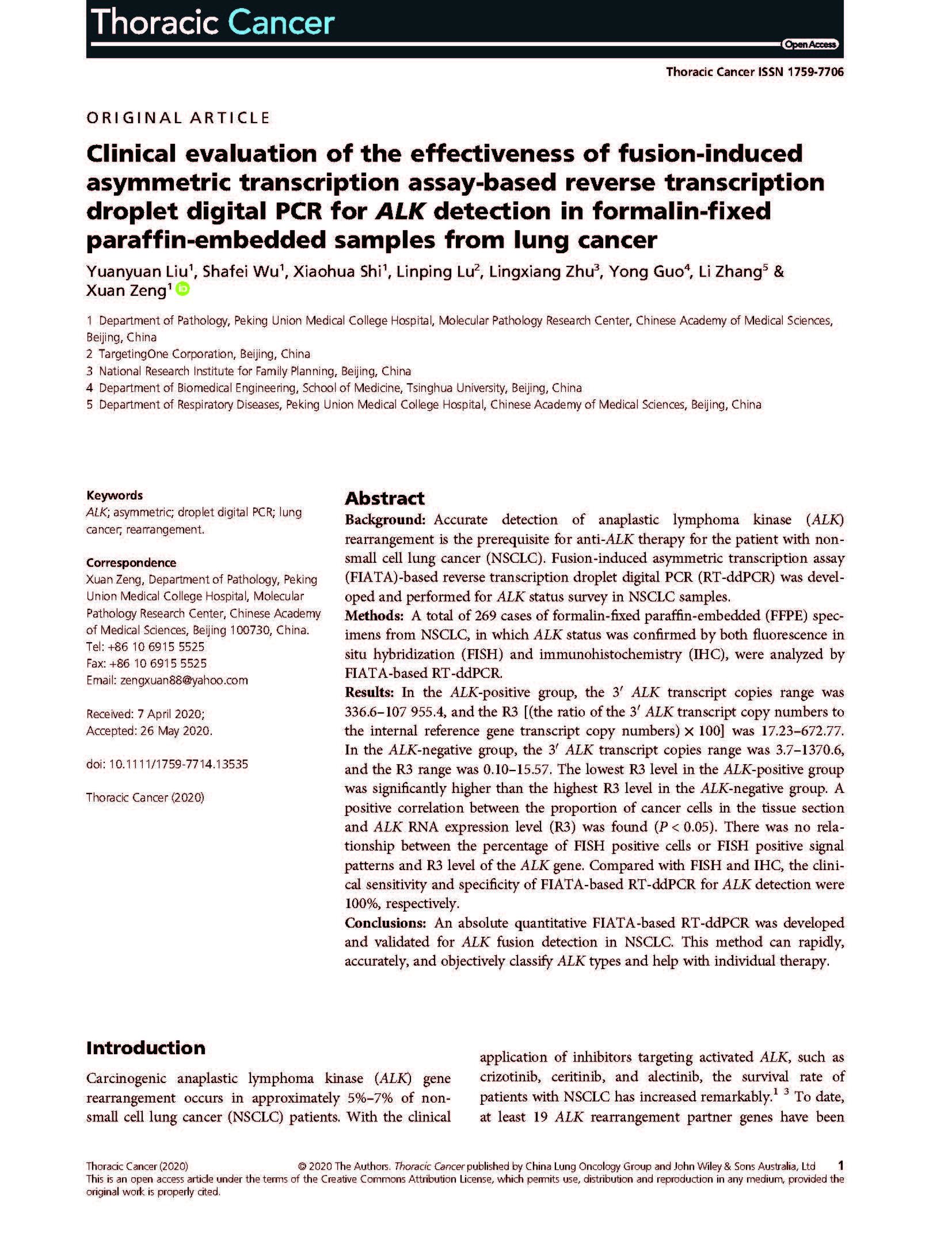Clinical evaluation of the effectiveness of fusion-induced asymmetric transcription assay-based reverse transcription droplet digital PCR for ALK detection in formalin-fixed paraffin-embedded samples from lung cancer
release date:2020-05-26

Background: Accurate detection of anaplastic lymphoma kinase (ALK) rearrangement is the prerequisite for anti-ALK therapy for the patient with non-small cell lung cancer (NSCLC). Fusion-induced asymmetric transcription assay (FIATA)-based reverse transcription droplet digital PCR (RT-ddPCR) was devel-oped and performed for ALK status survey in NSCLC samples.
Methods: A total of 269 cases of formalin-fixed paraffin-embedded (FFPE) spec-imens from NSCLC, in which ALK status was confirmed by both fluorescence in situ hybridization (FISH) and immunohistochemistry (IHC), were analyzed by FIATA-based RT-ddPCR.
Results: In the ALK-positive group, the 30 ALK transcript copies range was 336.6–107 955.4, and the R3 [(the ratio of the 30 ALK transcript copy numbers to the internal reference gene transcript copy numbers) × 100] was 17.23–672.77. In the ALK-negative group, the 30 ALK transcript copies range was 3.7–1370.6, and the R3 range was 0.10–15.57. The lowest R3 level in the ALK-positive group was significantly higher than the highest R3 level in the ALK-negative group. A positive correlation between the proportion of cancer cells in the tissue section and ALK RNA expression level (R3) was found (P < 0.05). There was no rela-tionship between the percentage of FISH positive cells or FISH positive signal patterns and R3 level of the ALK gene. Compared with FISH and IHC, the clini-cal sensitivity and specificity of FIATA-based RT-ddPCR for ALK detection were 100%, respectively.
Conclusions: An absolute quantitative FIATA-based RT-ddPCR was developed and validated for ALK fusion detection in NSCLC. This method can rapidly, accurately, and objectively classify ALK types and help with individual therapy.
See all: https://doi.org/10.1111/1759-7714.13535
 Background: Accurate detection of anaplastic lymphoma kinase (ALK) rearrangement is the prerequisite for anti-ALK therapy for the patient with non-small cell lung cancer (NSCLC). Fusion-induced asymmetric transcription assay (FIATA)-based reverse transcription droplet digital PCR (RT-ddPCR) was devel-oped and performed for ALK status survey in NSCLC samples.
Background: Accurate detection of anaplastic lymphoma kinase (ALK) rearrangement is the prerequisite for anti-ALK therapy for the patient with non-small cell lung cancer (NSCLC). Fusion-induced asymmetric transcription assay (FIATA)-based reverse transcription droplet digital PCR (RT-ddPCR) was devel-oped and performed for ALK status survey in NSCLC samples.